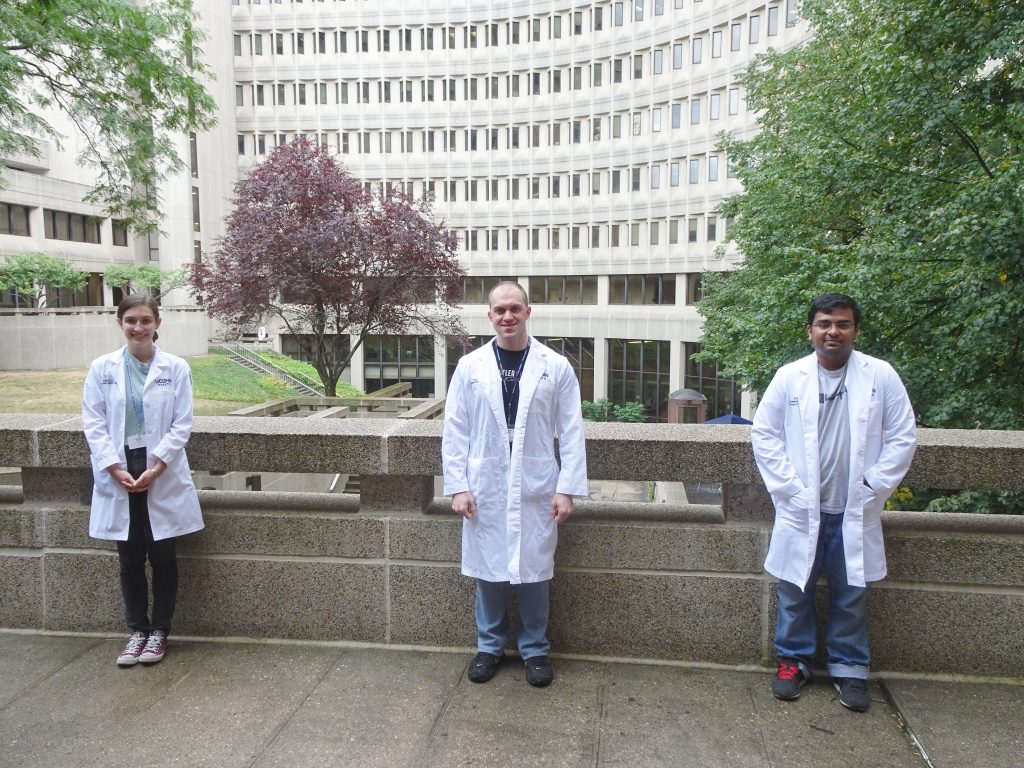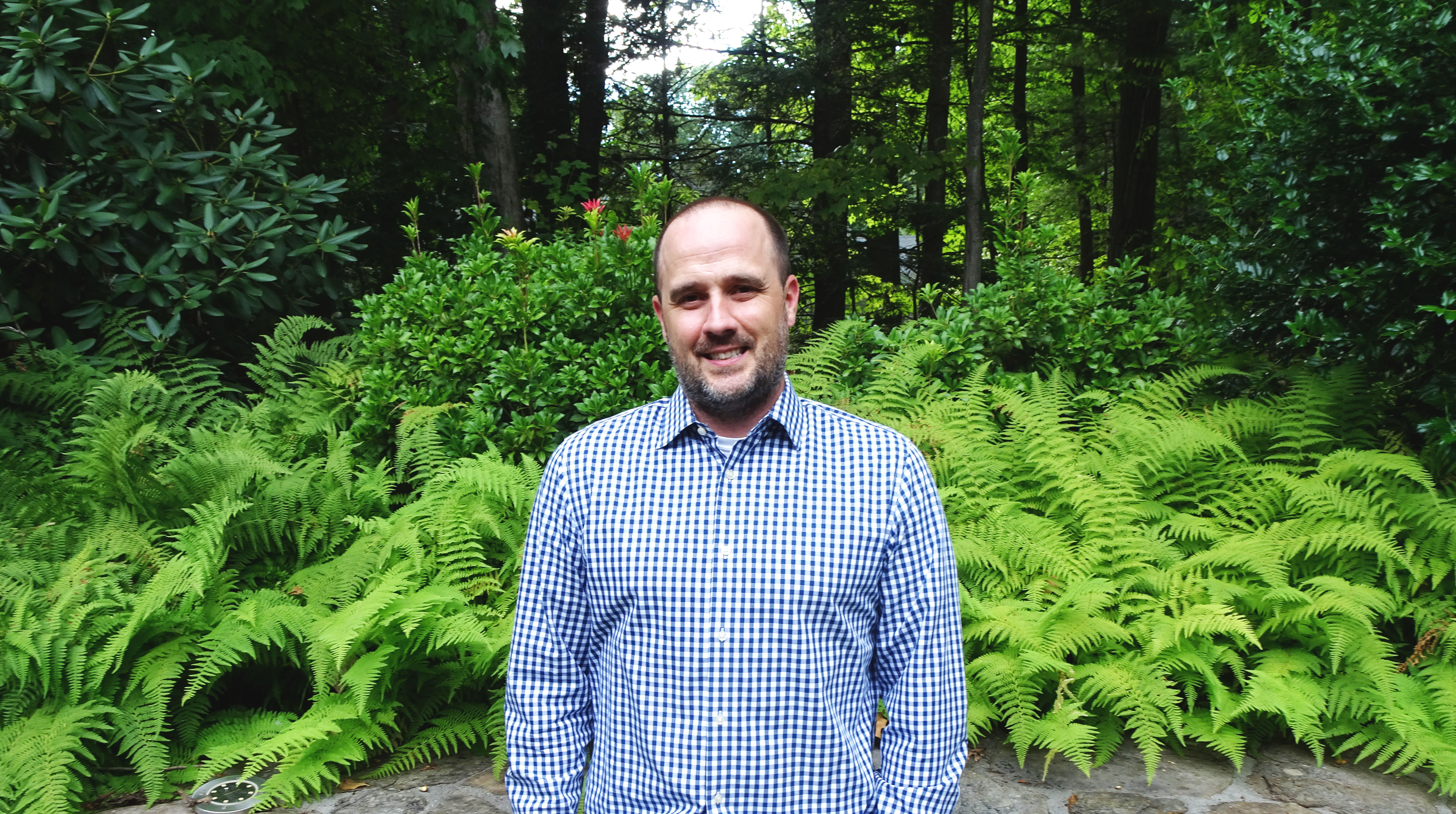Tannin Schmidt has dedicated his life to the pursuit of research centered around lubricin, a protein that plays a critical role in lubrication.
“We’re constantly trying to make discoveries that lead to new opportunities,” Schmidt says.
Schmidt was attracted to UConn’s growing biomedical engineering department, the opportunity to work at UConn Health – he is an associate professor in the UConn School of Dental Medicine – and the chance to be part of a supportive environment that helps facilitate the development of startups.
An entrepreneur and co-founder of a clinical stage company, Lubris BioPharma, a cutting-edge biopharmaceutical company that is currently working to treat dry eye and osteoarthritis through the application of lubricin, Schmidt was excited about the commercialization opportunities available to faculty inventors at UConn and UConn Health.
“With so many innovation activities going on at the university and in the state of Connecticut, accepting a position at UConn was a no-brainer,” says Schmidt.
The Discovery of a Lifetime
Schmidt studied engineering as an undergraduate, but his interest in sports injuries and physical ailments gave him the idea to pursue a more biological-focused route. Schmidt wanted to focus his research on areas with medical applications, so his work would someday have the opportunity to help patients. Ultimately, this desire would lead to his eventual focus and discovery of lubricin on the eye.
While lubricin was first discovered in the knee in the 1970s, it has only recently gained popularity as a possible treatment for conditions in other areas of the body.
A protein that plays an important role in the lubrication of cartilage and treatment of arthritis, scientists have been discovering myriad uses for lubricin. From its anti-inflammatory properties to its potential applications in healing wounds and cancers, lubricin is a promising resource for treating many kinds of ailments. One of Schmidt’s Ph.D. students is even researching how it can be used to treat breast cancer.

In graduate school, Schmidt had been examining the role of lubricin on cartilage. During a particularly insightful conversation, Schmidt and fellow graduate student Benjamin Sullivan speculated about the possible presence and application of lubricin in the eye.
“We were excited because discovering lubricin on the eye could be groundbreaking, especially in its application for people with dry eye disease who experience massive discomfort from the increased friction on their eyes. Lubricin as a drug could ultimately reduce that friction and discomfort,” says Schmidt.
This run-of-the-mill discussion between Schmidt and Sullivan sparked their initial discovery of lubricin on the eye, which included Sullivan’s father David Sullivan, a researcher at Schepens Eye Research Institute in Boston. This work eventually led to the formation of their startup Lubris BioPharma and continues to fuel Schmidt’s desire for discovery today.
“What drives me is the excitement of finding something new,” Schmidt says. “From the initial discovery all the way to the potential end product.”
From there, they were able to develop a full-length version of the protein with help from Selexis, a leading biotech company in Switzerland that works in cell development and gene technology, paving the way for their future success.
Eventually, an Italian company Dompé conducted a small trial to treat dry eye, which garnered promising results that attracted the interest of Novartis, a global leader in healthcare. Eventually, Novartis in-licensed ophthalmic applications of the recombinant human lubricin protein and are now developing it to treat dry eye disease. If successful, by 2023 the new drug may be available to the public.
Seeing it from Both Sides
Throughout his career, Schmidt has found a project cannot be successful without taking into account both academic and entrepreneurial aspects.
“When I started, I always thought that if you have the science then it will be successful, but that was not always the case,” Schmidt explains. “The business management side is just as important, and I have learned to appreciate it.”
While making a discovery always helps with grant applications and the potential for funding, it does not always mean it will turn into an entrepreneurial opportunity. It also depends on the market and whether there is a need for a given innovation and if it makes sense from a cost perspective.
“Without good science, there’s no potential for a patent,” Schmidt says.
Schmidt realized this when he was doing research on contact lenses. He had the idea to put lubricin on the contact lens to reduce friction and increase comfort. However, although it was academically validated, it would not have been successful economically.
Meshing the entrepreneurial side with academia has transformed the way Schmidt works.
“I never really expected for this synergy of interest to change how we communicate in the lab, but it has” Schmidt says, “It is amazing how my activities outside the lab have actually helped me run a more productive lab. It has completely changed my approach.”
Helping Patients Through Innovation
At the heart of his work, Schmidt hopes his research will be able to help patients to have a better quality of life. He would often hear about patients dealing with chronic dry eye and thought lubricin might help. While not life threatening, this condition can severely impact a patient’s quality of life.
Trying to help these people who have very few effective treatment options is a driving force behind Schmidt’s research.
“When you know people that suffer from the disease, dry eye in this case, and have a hand in creating something that can help, it is a really exciting experience,” Schmidt says.



